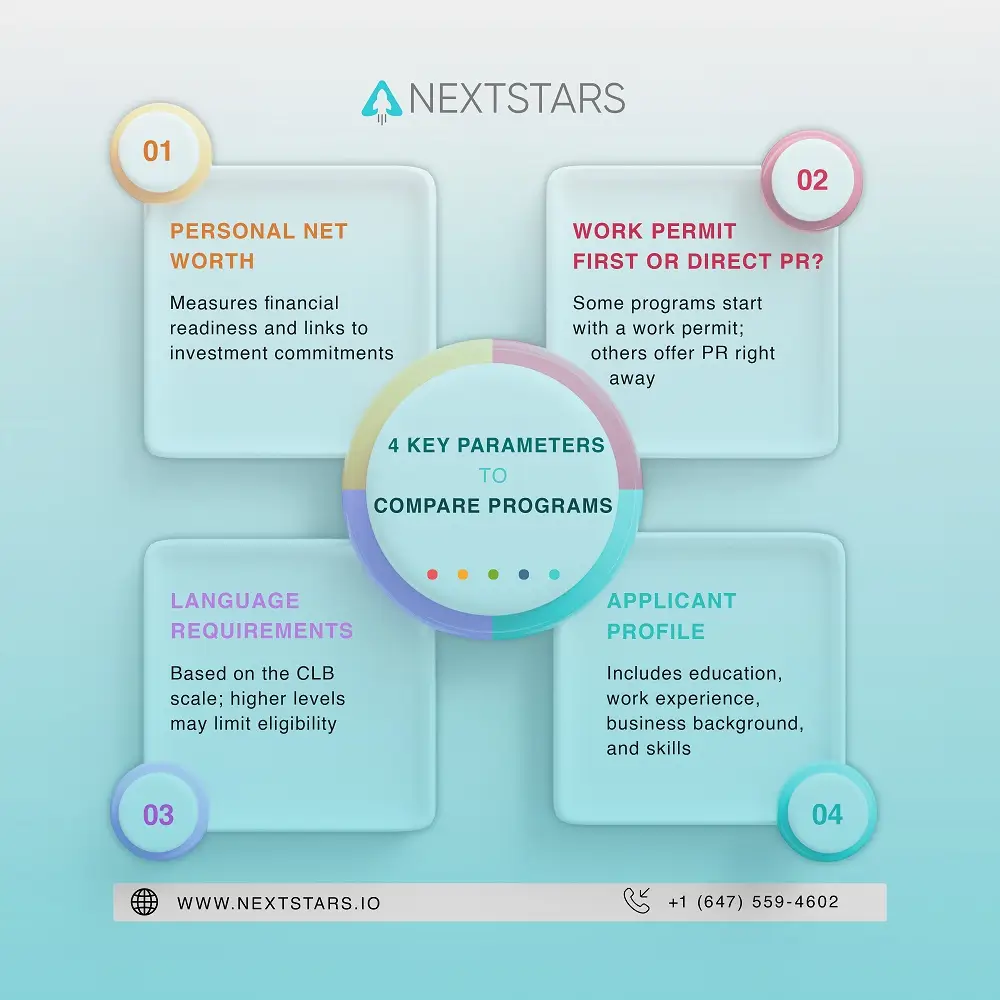Canada’s provinces and territories offer a wide array of immigration pathways for entrepreneurs and business-minded newcomers. From startup founders and seasoned executives to recent graduates and self-employed professionals, there’s a program for almost every type of applicant. But while the range of options is impressive, it can also be daunting. The rules, requirements, and timelines vary significantly from one province to another, making it difficult to identify which stream aligns best with a specific applicant’s background and goals.
This article offers a strategic framework for cutting through that complexity.
A Smarter Way to Compare Programs
Rather than listing each program’s criteria in isolation, we took a step back and looked at the broader picture. We analyzed every provincial and territorial business immigration stream in Canada and reorganized them into meaningful groups based on how real applicants typically approach the process.
The result is a practical classification system — not just for policymakers and consultants, but for the applicants themselves. Whether someone is building their first business or looking to expand internationally, this framework is designed to guide them toward the programs that make the most sense for their profile.
Four Parameters That Matter
To make sense of the different immigration streams, we focused on four key variables. These are the defining characteristics that applicants — and immigration officers — pay closest attention to.
1. Personal Net Worth Requirement
Every program sets a baseline for how much wealth an applicant must have. These thresholds help gauge financial readiness and are usually linked to investment commitments in the host province.
2. Work Permit First or PR Direct Path
Some provinces follow a step-by-step approach: applicants receive a temporary work permit, operate the business for a period, and then become eligible for permanent residency. Others allow applicants to apply for permanent residency from the outset. This distinction has a direct impact on planning, timelines, and risk tolerance.
3. Language Requirements
Most programs require applicants to meet minimum English or French language levels, typically measured by the Canadian Language Benchmark (CLB) scale. The level varies by program, but higher thresholds can exclude otherwise qualified candidates.
4. Applicant Profile
This is a broader category that encompasses education, industry background, entrepreneurial experience, and technical skills. A seasoned executive, for example, will be a better fit for certain streams than a recent graduate with a fresh business idea — and vice versa.
Using these parameters, we grouped all streams into five practical categories.

Five Applicant-Focused Categories
These categories reflect the reality that not all applicants are the same. Some are young graduates, others are serial entrepreneurs. Some have millions to invest; others are just getting started. By understanding these differences, we’ve created a more intuitive way to navigate Canada’s business immigration options.
For Recent Graduates with Ambition
These programs target international and Canadian graduates who have completed post-secondary education and want to build a future in Canada by starting or taking over a business. They often feature lower capital requirements and are designed to retain talent trained in Canadian institutions.
For Experienced Business Owners & Senior Managers
Tailored for those with a strong track record in business management or ownership, these streams tend to have higher net worth and investment thresholds. They prioritize applicants who are ready to bring established business expertise to the Canadian economy.
For Innovators & Startup-Minded Entrepreneurs
These streams are designed for applicants with high-potential, scalable business ideas. Many require affiliation with an incubator, accelerator, or university entrepreneurship center. The emphasis here is on innovation and long-term growth.
For Farmers and Self-Employed Professionals
Applicants with hands-on experience in agriculture or operating their own business in a skilled trade may find these programs well-suited. They tend to require very specific experience and clear plans to operate in those sectors.
For Resilient Builders in Smaller Communities
These programs are aimed at applicants willing to settle in smaller or underserved regions across Canada. They often come with lower investment requirements and are designed to promote regional economic development outside major urban centers.
What’s Ahead
In the coming weeks, we’ll be publishing a series of articles that explore each of these categories in depth. Each article will highlight the key programs, compare their requirements, and offer insights into how applicants can position themselves for success.
For anyone considering business immigration to Canada, this framework offers a starting point — not just to understand the rules, but to find the path that fits.





